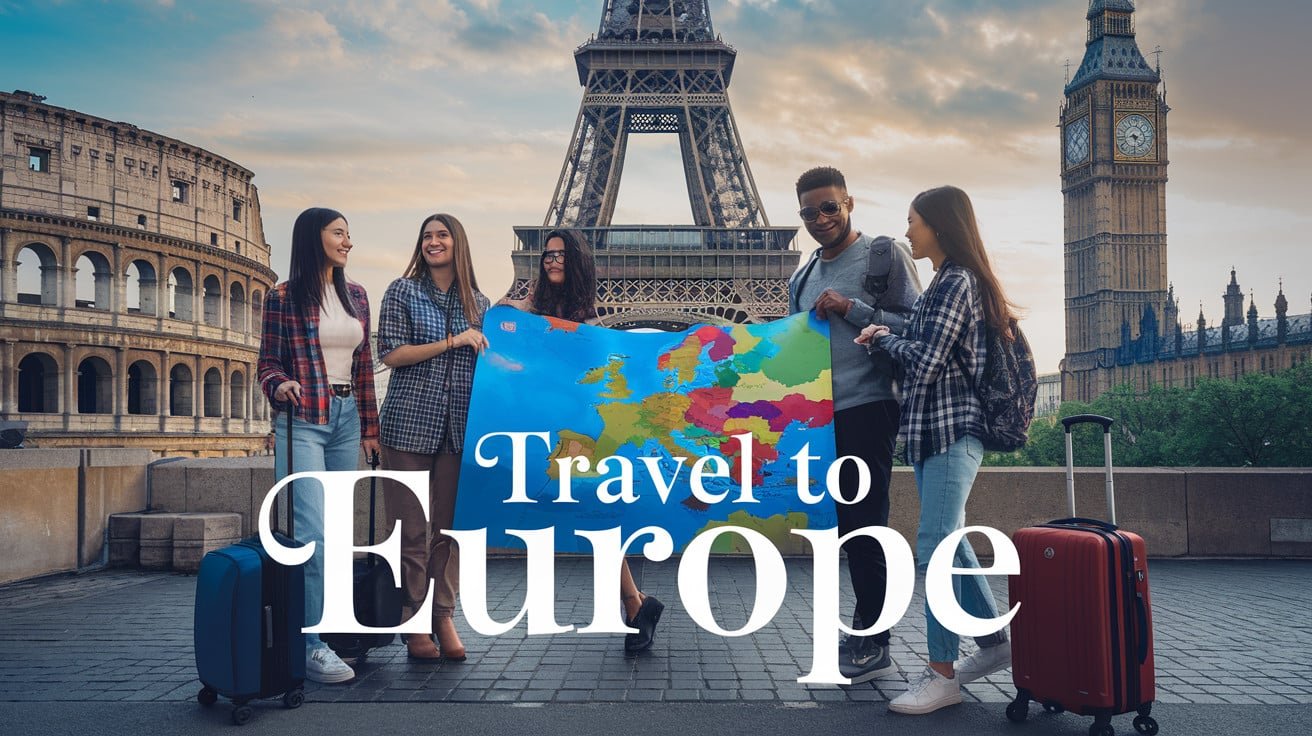Have you ever dreamed of strolling through the charming streets of Paris , marveling at the ancient ruins of Rome, or indulging in tapas in Barcelona? Europe, with its rich history, diverse cultures, and breathtaking landscapes, beckons travelers from around the world. But planning a trip to this captivating continent can feel overwhelming.
Don’t let the complexities of European travel hold you back from your dream vacation! Whether you’re a first-time visitor or a seasoned traveler, our comprehensive guide will equip you with all the knowledge you need to embark on an unforgettable European adventure. From essential travel documents to transportation tips, accommodation options, and must-see attractions, we’ve got you covered.
In this guide, we’ll take you on a journey through the ins and outs of European travel, helping you navigate everything from culinary delights to local etiquette. You’ll discover how to stay safe and healthy, manage your finances, and immerse yourself in the vibrant cultures that make Europe so unique. So, pack your bags and get ready to explore as we delve into the ten essential aspects of planning your perfect European getaway!

Planning Your European Adventure
Choosing the Perfect Destinations
When planning your European adventure, selecting the right destinations is crucial. Europe offers a diverse array of experiences, from ancient historical sites to modern metropolises. To make the most of your trip, consider your interests and travel style:
- Cultural enthusiasts: Rome, Paris, Athens
- Nature lovers: Swiss Alps, Norwegian Fjords, Scottish Highlands
- Beach goers: Greek Islands, Costa del Sol, French Riviera
- History buffs: Berlin, Prague, Vienna
Remember to balance popular tourist spots with off-the-beaten-path gems for a well-rounded experience.
Best Times to Visit Europe
The ideal time to visit Europe depends on your preferences and the specific regions you’re planning to explore. Here’s a general guide:
| Season | Pros | Cons |
|---|---|---|
| Spring (March-May) | Mild weather, fewer crowds | Some attractions may have limited hours |
| Summer (June-August) | Warm weather, long days | Peak tourist season, higher prices |
| Fall (September-November) | Pleasant temperatures, harvest festivals | Shorter days, potential for rain |
| Winter (December-February) | Christmas markets, winter sports | Cold weather, limited daylight hours |
Consider shoulder seasons (spring and fall) for a balance between good weather and smaller crowds.
Creating a Realistic Itinerary
When crafting your European itinerary, it’s essential to be realistic about what you can accomplish. Here are some tips:
- Don’t overpack your schedule: Allow time for spontaneous discoveries
- Factor in travel time between destinations
- Include rest days to avoid burnout
- Prioritize your must-see attractions
- Group nearby destinations together to maximize efficiency
Remember, quality experiences often trump quantity. It’s better to fully immerse yourself in fewer places than to rush through many.
Budgeting for Your Trip
Creating a comprehensive budget is crucial for a successful European adventure. Consider these key factors:
- Transportation: Flights, trains, buses, car rentals
- Accommodation: Hotels, hostels, vacation rentals
- Food and drinks: Restaurants, cafes, groceries
- Activities and attractions: Museum entries, guided tours, shows
- Shopping and souvenirs
- Emergency fund: For unexpected expenses
Research costs for each destination, as prices can vary significantly across Europe. Consider using budgeting apps or spreadsheets to track your expenses before and during your trip.
Now that you’ve laid the groundwork for planning your European adventure, it’s time to ensure you have all the necessary travel documents for a smooth journey.
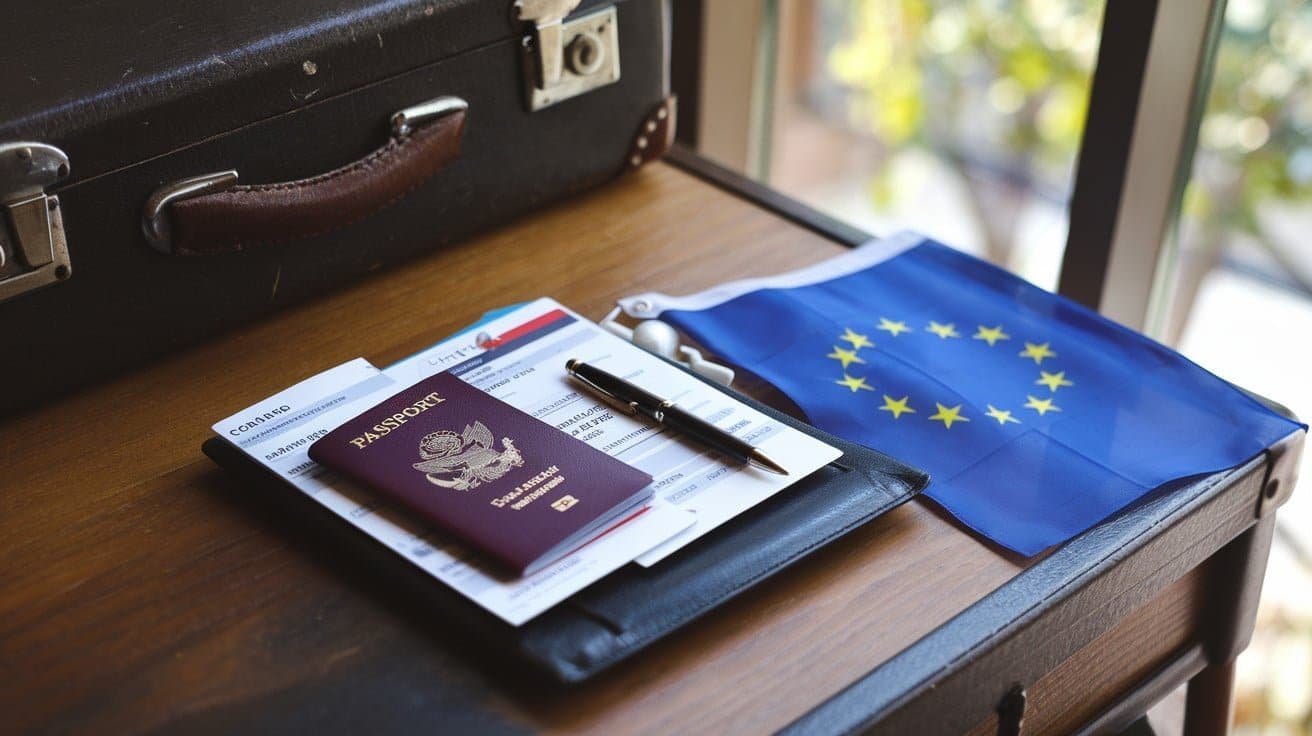
Essential Travel Documents
When planning your European adventure, ensuring you have all the necessary travel documents is crucial. Let’s dive into the essential paperwork you’ll need to make your journey smooth and hassle-free.
A. Passport Requirements
Your passport is your most important travel document when visiting Europe. Here’s what you need to know:
- Validity: Ensure your passport is valid for at least six months beyond your planned return date.
- Blank Pages: Most European countries require at least two blank pages in your passport for entry and exit stamps.
- Condition: Your passport should be in good condition without any damage or alterations.
B. Visa Regulations for Different Countries
Visa requirements can vary depending on your nationality and the European countries you plan to visit. Here’s a breakdown:
Schengen Area
The Schengen Area comprises 26 European countries that have agreed to allow free movement of their citizens within the area as a single jurisdiction for international travel purposes.
| Visa-Free Stay | Countries Included | Requirements |
|---|---|---|
| Up to 90 days | Most EU countries | Valid passport |
| Visa Required | Non-Schengen countries | Varies by country |
For non-EU citizens, check the specific requirements for each country you plan to visit. Some may require a Schengen visa, while others may have their own visa regulations.
C. Travel Insurance Options
Travel insurance is an essential safeguard for your European trip. Consider the following options:
- Comprehensive Travel Insurance: Covers trip cancellation, medical emergencies, and lost luggage.
- Medical-Only Insurance: Focuses on health coverage during your trip.
- Annual Multi-Trip Insurance: Ideal if you travel frequently.
When choosing travel insurance, consider:
- Coverage limits
- Deductibles
- Activities covered (e.g., adventure sports)
- Pre-existing condition coverage
Remember to read the fine print and understand what’s included in your policy. Some credit cards offer travel insurance as a benefit, so check if you’re already covered before purchasing additional insurance.
By ensuring you have all the necessary travel documents and insurance in place, you’ll be well-prepared for your European adventure. With these essentials taken care of, you can focus on planning your transportation and accommodation, which we’ll explore in the next sections of this guide.
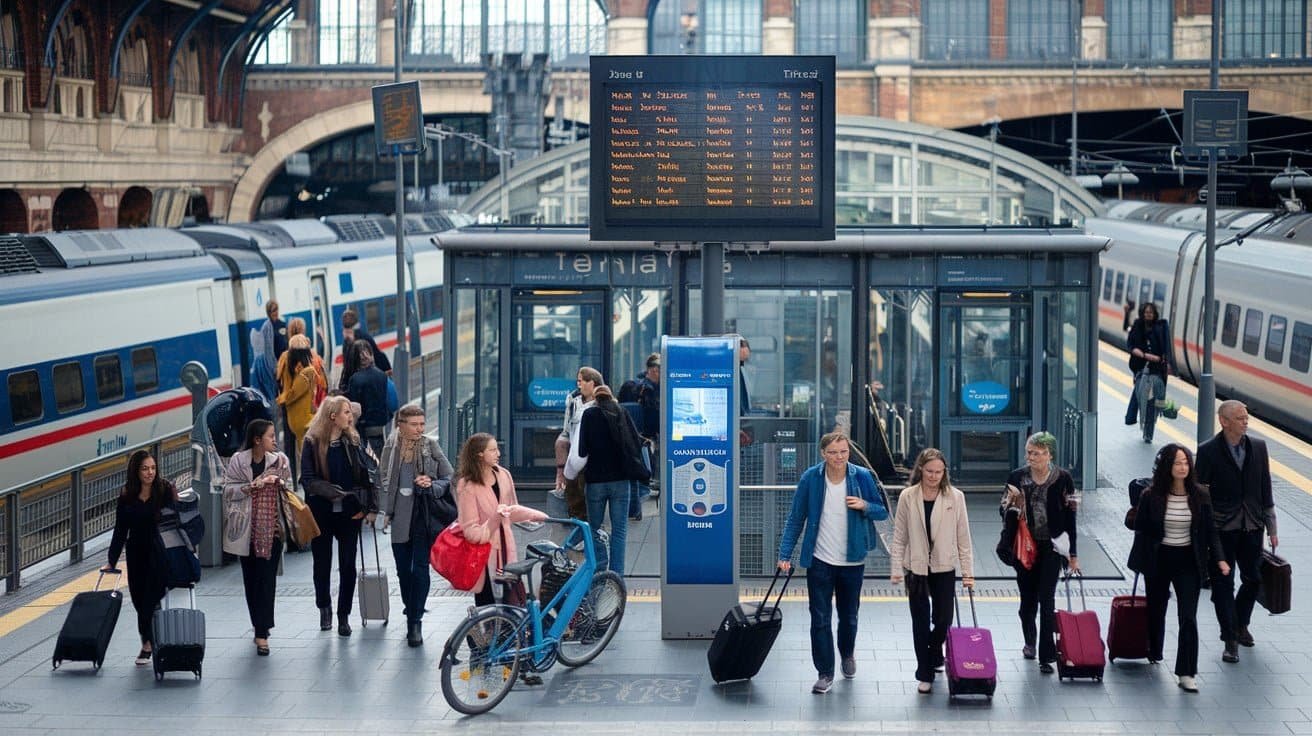
Transportation in Europe
As you plan your European adventure, understanding the various transportation options available is crucial for a smooth and enjoyable journey. Europe offers a diverse range of travel methods, each with its own advantages and considerations. Let’s explore the different ways you can move around the continent.
A. Flying between countries
Flying is often the quickest way to cover large distances in Europe. With numerous low-cost carriers and well-connected airports, air travel can be both convenient and cost-effective. Here are some tips for flying in Europe:
- Book in advance to secure the best deals
- Be aware of baggage restrictions, which can vary between airlines
- Consider using smaller, regional airports for potentially lower fares
B. Navigating train systems
Europe’s extensive rail network is one of the most comfortable and scenic ways to travel. The continent’s high-speed trains can rival air travel in terms of journey times between major cities. Here’s what you need to know about European trains:
- Purchase a Eurail Pass for flexible, multi-country travel
- Book seats in advance for popular routes, especially during peak seasons
- Take advantage of night trains to save on accommodation costs
C. Renting a car vs. public transport
Deciding between renting a car and using public transport depends on your itinerary and preferences. Here’s a comparison to help you choose:
| Aspect | Renting a Car | Public Transport |
|---|---|---|
| Flexibility | High | Limited |
| Cost | Higher (fuel, parking, tolls) | Generally lower |
| Convenience | Great for rural areas | Excellent in cities |
| Environmental Impact | Higher | Lower |
| Stress Level | Can be high (navigation, parking) | Generally lower |
D. Budget-friendly transportation tips
To make the most of your travel budget, consider these money-saving strategies:
- Use ridesharing apps for intercity travel
- Opt for bike rentals in bike-friendly cities
- Take advantage of city travel cards for unlimited public transport
- Walk when possible – it’s free and allows you to explore at your own pace
When choosing your transportation methods, consider factors such as your travel route, budget, and desired experiences. Mixing different modes of transport can offer you a more diverse and enriching European adventure.
Remember that each country may have its own transportation quirks and systems. Research your specific destinations to ensure you’re prepared for local travel norms. With the right combination of transportation options, you’ll be well-equipped to explore Europe’s diverse landscapes, from bustling cities to charming countryside.
Next, we’ll delve into the various accommodation options available across Europe, helping you find the perfect place to rest after your travels.
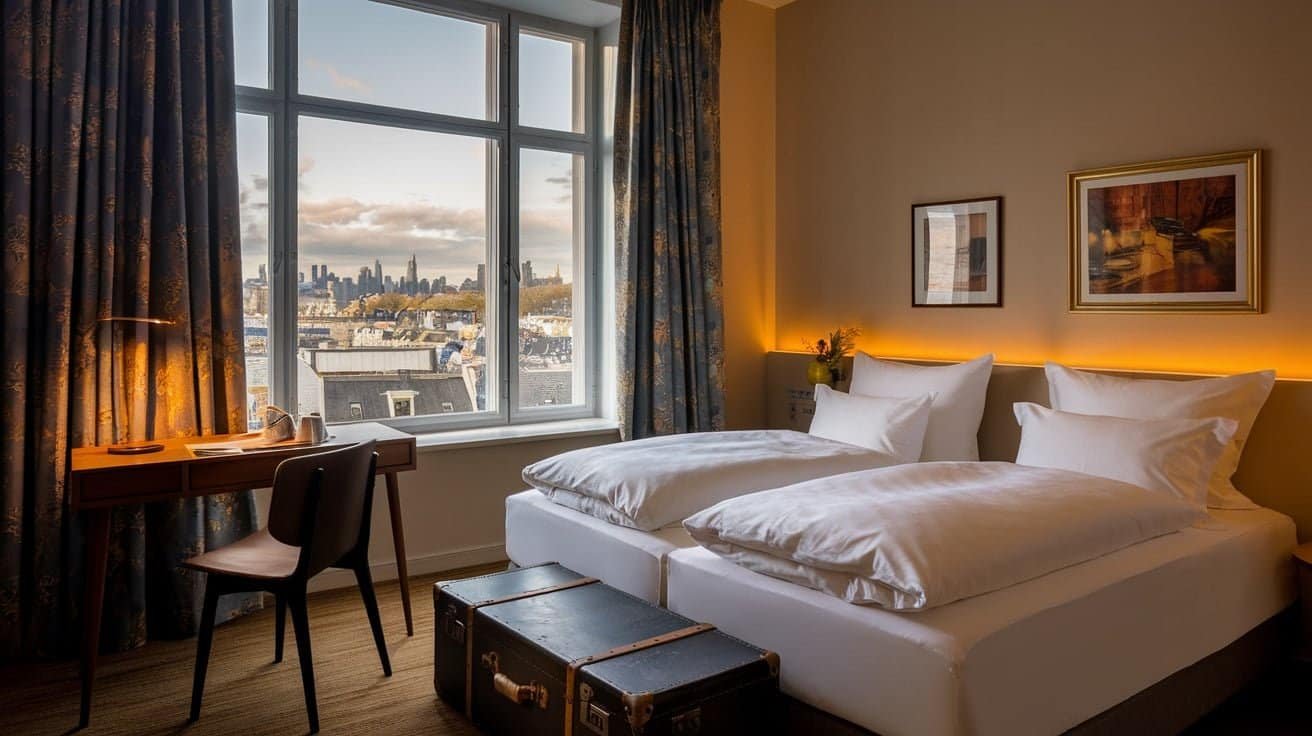
Accommodation Options
Now that you’ve sorted out your travel documents and transportation, let’s explore the various accommodation options available for your European adventure. Europe offers a wide range of places to stay, catering to different budgets, preferences, and travel styles.
Hotels and Resorts
Hotels and resorts are the most traditional accommodation options in Europe. You’ll find everything from budget-friendly chain hotels to luxurious five-star resorts. Here’s a quick overview:
- Pros: Convenient locations, amenities, daily housekeeping
- Cons: Can be expensive, especially in prime locations
| Hotel Type | Best For | Average Price Range (per night) |
|---|---|---|
| Budget | Solo travelers, short stays | €50 – €100 |
| Mid-range | Couples, families | €100 – €200 |
| Luxury | Special occasions, pampering | €200+ |
Hostels for Budget Travelers
If you’re traveling on a budget or looking to meet fellow travelers, hostels are an excellent choice. They’ve come a long way from their bare-bones reputation:
- Pros: Affordable, social atmosphere, often centrally located
- Cons: Shared spaces, less privacy
Many hostels now offer private rooms in addition to dormitories, giving you more options to balance privacy and budget.
Vacation Rentals and Airbnb
For a home-away-from-home experience, consider vacation rentals or Airbnb. These options allow you to live like a local and often provide more space and amenities:
- Pros: More space, kitchen facilities, local experience
- Cons: Less standardized, may require more planning
Remember to read reviews carefully and communicate with your host before booking to ensure a smooth stay.
Unique Stays: Castles, Treehouses, and More
Europe offers some truly unique accommodation experiences that can make your trip unforgettable. Consider these options:
- Castles in Scotland or Ireland
- Treehouses in Sweden
- Ice hotels in Finland
- Windmills in the Netherlands
- Cave hotels in Cappadocia, Turkey
These unique stays often combine accommodation with an attraction, giving you a two-in-one experience.
When choosing your accommodation, consider factors like:
- Location (proximity to attractions or public transport)
- Budget
- Amenities you need (Wi-Fi, kitchen, laundry facilities)
- Length of stay (longer stays might benefit from vacation rentals)
- Travel style (solo, couple, family, group)
Remember, mixing and matching different types of accommodation during your trip can give you a more diverse experience of Europe. You might splurge on a castle stay for a few nights, then balance it with budget-friendly hostels in cities.
As you plan your European itinerary, keep in mind that accommodation styles and prices can vary significantly between countries and even cities. Research your specific destinations to get a better idea of what to expect and book in advance, especially during peak tourist seasons.
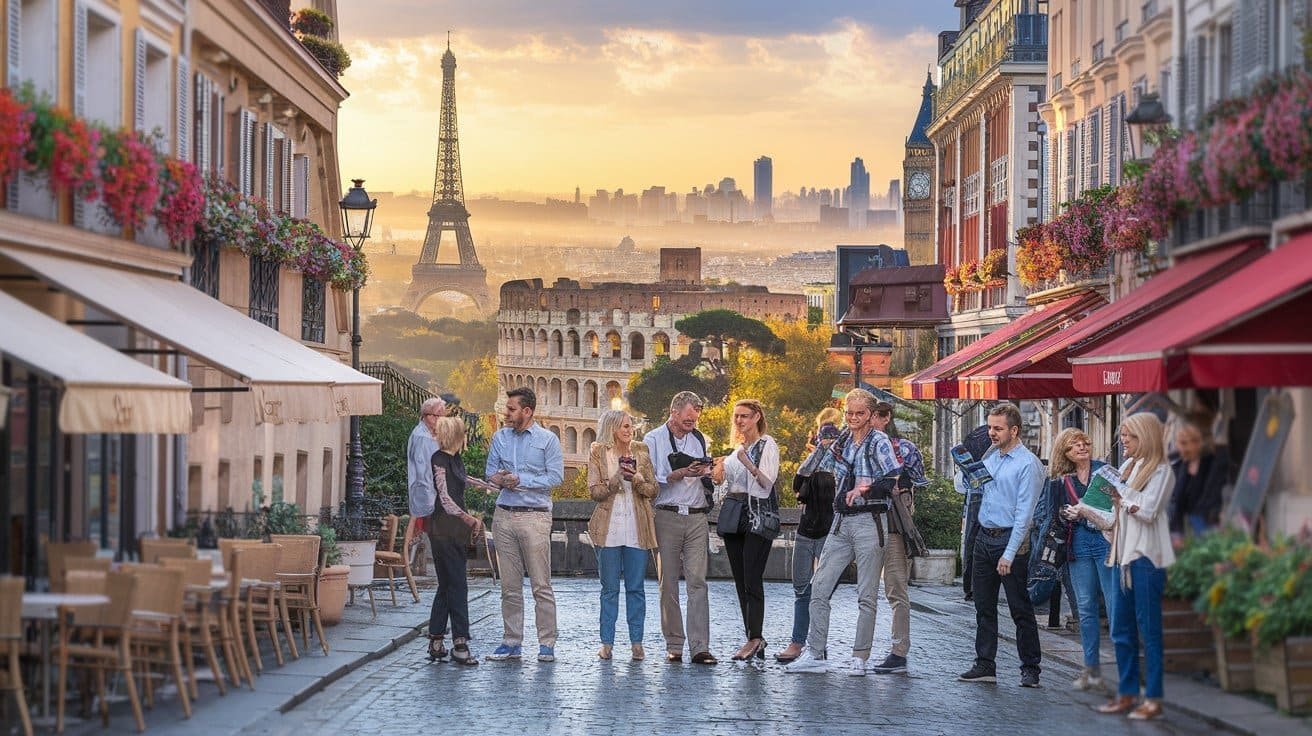
Must-See Attractions and Experiences
Now that you’ve sorted out your transportation and accommodation, it’s time to dive into the heart of your European adventure: the must-see attractions and experiences. Europe is a treasure trove of iconic landmarks, world-class museums, vibrant cultural events, and hidden gems waiting to be discovered. Let’s explore the best ways to make your trip unforgettable.
Iconic Landmarks and Monuments
Europe is home to some of the world’s most recognizable landmarks. You’ll want to add these to your itinerary:
- The Eiffel Tower in Paris
- The Colosseum in Rome
- Big Ben in London
- The Sagrada Familia in Barcelona
These architectural marvels not only offer breathtaking views but also provide insights into the rich history and culture of their respective cities. To make the most of your visits, consider booking skip-the-line tickets in advance and joining guided tours for in-depth information.
World-Class Museums and Galleries
Art and history enthusiasts, rejoice! Europe boasts an unparalleled collection of museums and galleries. Here are some you shouldn’t miss:
| Museum | City | Famous Works |
|---|---|---|
| The Louvre | Paris | Mona Lisa, Venus de Milo |
| The British Museum | London | Rosetta Stone, Parthenon sculptures |
| The Uffizi Gallery | Florence | Birth of Venus, Primavera |
| The Van Gogh Museum | Amsterdam | Sunflowers, The Potato Eaters |
To avoid long queues and ensure entry, book your tickets online and plan your visit during off-peak hours, typically early morning or late afternoon.
Cultural Events and Festivals
Immerse yourself in the vibrant European culture by attending local events and festivals. Some notable ones include:
- Oktoberfest in Munich, Germany
- Carnevale in Venice, Italy
- Edinburgh Fringe Festival in Scotland
- La Tomatina in Buñol, Spain
These events offer unique experiences and allow you to mingle with locals and fellow travelers. Research the dates well in advance and book accommodations early, as these popular events tend to attract large crowds.
Hidden Gems Off the Beaten Path
While iconic attractions are a must, don’t forget to explore lesser-known destinations for a more authentic European experience. Consider these options:
- Cinque Terre, Italy: A string of colorful coastal villages
- Plitvice Lakes National Park, Croatia: A paradise of turquoise lakes and waterfalls
- Cesky Krumlov, Czech Republic: A fairytale-like medieval town
- The Azores, Portugal: Stunning volcanic islands in the Atlantic
These hidden gems often offer a more relaxed atmosphere and the opportunity to connect with local culture away from the tourist crowds.
To make the most of your European adventure, balance your itinerary between famous attractions and off-the-beaten-path experiences. This mix will give you a well-rounded perspective of Europe’s diverse landscapes, cultures, and histories.
As you plan your sightseeing adventures, keep in mind that Europe’s charm lies not just in its attractions but also in its culinary delights. Next, we’ll explore the mouthwatering world of European cuisine and how you can make the most of your dining experiences across the continent.
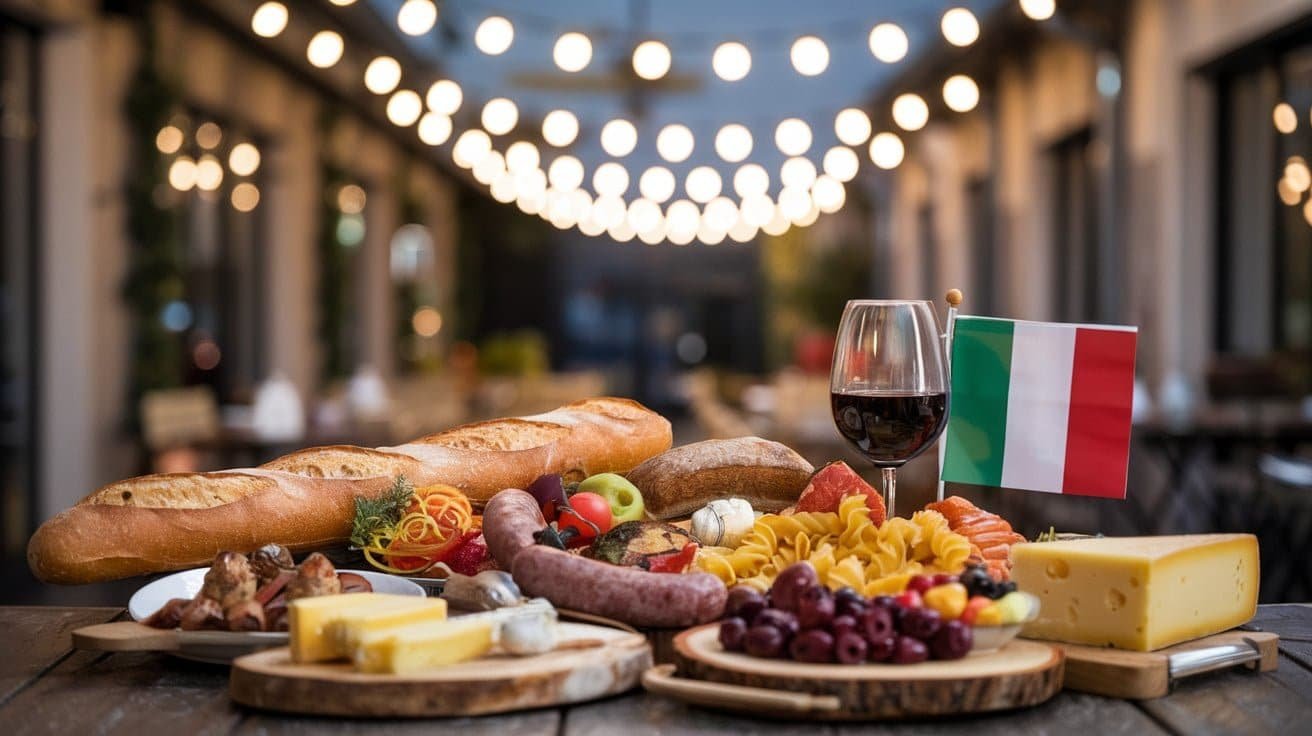
Culinary Delights of Europe
Now that you’ve explored the must-see attractions, it’s time to tantalize your taste buds with Europe’s incredible culinary offerings. From hearty stews to delicate pastries, European cuisine is as diverse as its landscapes.
Regional Specialties to Try
Europe is a treasure trove of gastronomic delights, each region boasting its own unique flavors and specialties. Here’s a taste of what you can expect:
| Country | Must-Try Dish |
|---|---|
| Italy | Authentic Neapolitan pizza |
| France | Coq au Vin |
| Spain | Paella |
| Greece | Moussaka |
| Germany | Wiener Schnitzel |
Don’t limit yourself to these popular dishes. Venture into local markets and small family-run restaurants to discover hidden culinary gems unique to each area you visit.
Food Tours and Cooking Classes
To truly immerse yourself in European cuisine, consider joining food tours or cooking classes. These experiences offer you:
- Insight into local ingredients and cooking techniques
- A chance to interact with local chefs and food enthusiasts
- The opportunity to recreate your favorite European dishes at home
Many cities offer specialized tours focusing on specific foods like chocolate in Brussels or wine in Bordeaux. Look for highly-rated experiences on travel websites or ask your accommodation for recommendations.
Dining Etiquette Across Countries
Understanding local dining customs can enhance your culinary experience and help you avoid cultural faux pas. Here are some general tips:
- In many European countries, it’s polite to keep your hands visible on the table while eating
- Tipping practices vary widely; research local customs before your trip
- In some countries like Spain, lunch is the main meal and is eaten later in the day
Remember, dining etiquette can differ significantly between countries, so it’s worth researching specific customs for each destination on your itinerary.
Budget-Friendly Eating Options
Experiencing European cuisine doesn’t have to break the bank. Here are some wallet-friendly options:
- Street food: Many European cities have excellent street food scenes. Try currywurst in Berlin or crepes in Paris.
- Local markets: Purchase fresh ingredients for a picnic in a scenic park.
- Set lunch menus: Many restaurants offer fixed-price lunch menus that are more affordable than dinner options.
- Self-catering: If you’re staying in accommodations with kitchen facilities, try cooking with local ingredients.
By mixing high-end dining experiences with budget-friendly options, you’ll get a well-rounded taste of European cuisine without overspending.
As you savor the culinary delights of Europe, you’ll find that food is more than just sustenance—it’s an integral part of the cultural experience. Each meal offers a chance to connect with local traditions and create lasting memories. With your taste buds satisfied, you’ll be ready to tackle the next important aspect of your European adventure: staying safe and healthy during your travels.
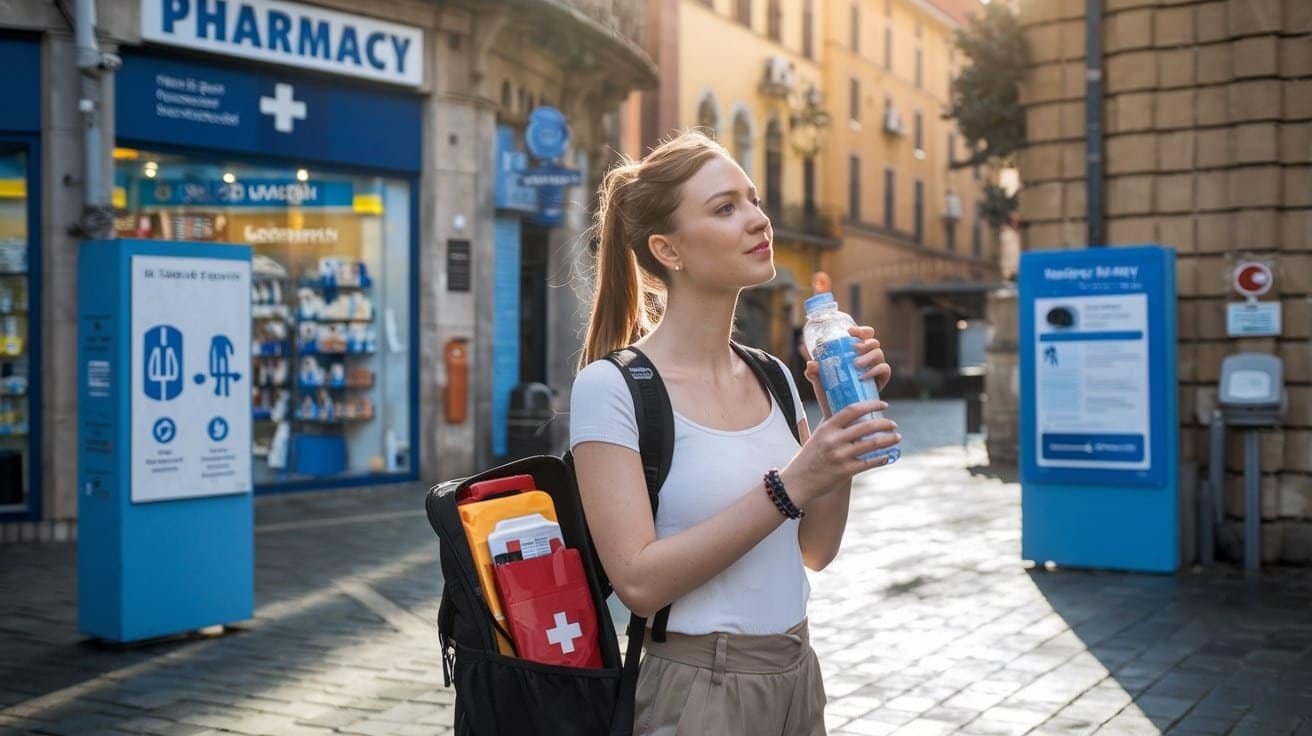
Staying Safe and Healthy
Now that you’ve explored the incredible attractions and savored the culinary delights of Europe, it’s crucial to focus on staying safe and healthy during your journey. By being prepared and aware, you can ensure a worry-free and enjoyable European adventure.
Common travel scams and how to avoid them
Europe is generally safe, but like any popular tourist destination, it has its share of scams. Here are some common ones to watch out for:
- Pickpocketing
- Fake petitions
- “Found” ring scams
- Overpriced taxi rides
To avoid falling victim to these scams, always stay vigilant, keep your valuables secure, and trust your instincts. If something seems too good to be true, it probably is.
Healthcare systems in Europe
European healthcare systems vary by country, but many offer high-quality care. Here’s a comparison of healthcare access for tourists in some popular European destinations:
| Country | Public Healthcare Access | Travel Insurance Recommended |
|---|---|---|
| France | Limited | Yes |
| Germany | Limited | Yes |
| Italy | Emergency only | Strongly recommended |
| Spain | Emergency only | Strongly recommended |
| UK | Emergency only | Yes |
It’s always wise to have comprehensive travel insurance that covers medical emergencies and repatriation.
Emergency numbers and important contacts
Memorize these essential emergency numbers that work across most of Europe:
- 112: General emergency (police, fire, ambulance)
- 116 116: Lost or stolen cards
- Your embassy’s emergency contact number
Save these numbers in your phone and write them down in case your device is lost or stolen.
Travel vaccinations and medications
Before your trip, consult with your healthcare provider about necessary vaccinations and medications. While Europe doesn’t typically require specific vaccines for entry, it’s wise to ensure your routine vaccinations are up to date.
Some health precautions to consider:
- Pack any prescription medications in their original containers
- Bring a copy of your prescriptions and a letter from your doctor
- Consider carrying basic over-the-counter medications for common ailments
Remember, your health and safety are paramount. By taking these precautions, you’ll be well-prepared to handle any situation that may arise during your European adventure.
Next, we’ll delve into the intricacies of European etiquette, helping you navigate social norms and customs with ease.
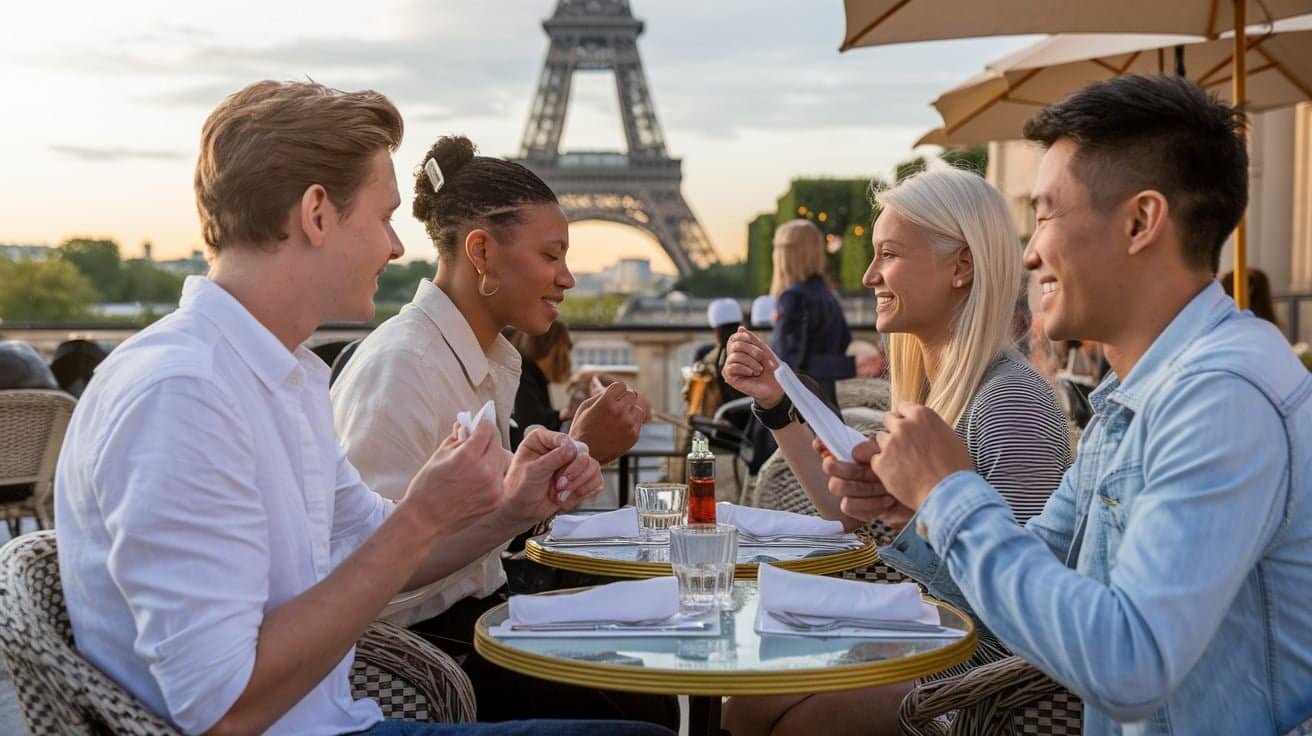
Mastering European Etiquette
Now that you’ve learned about staying safe and healthy during your European adventure, let’s dive into an equally important aspect of your trip: mastering European etiquette. Understanding and respecting local customs will enhance your travel experience and help you connect with the cultures you’re visiting.
Language Basics for Different Countries
While English is widely spoken in many European countries, making an effort to learn a few basic phrases in the local language can go a long way. Here’s a quick guide to essential phrases in some popular European languages:
| Language | Hello | Thank you | Please | Excuse me |
|---|---|---|---|---|
| French | Bonjour | Merci | S’il vous plaît | Excusez-moi |
| German | Hallo | Danke | Bitte | Entschuldigung |
| Italian | Ciao | Grazie | Per favore | Scusi |
| Spanish | Hola | Gracias | Por favor | Perdón |
Remember, even if you mispronounce these phrases, locals will appreciate your effort to speak their language. It’s a great way to break the ice and show respect for the local culture.
Tipping Customs
Tipping practices vary widely across Europe, and it’s essential to understand the expectations in each country you visit. Here are some general guidelines:
- Southern Europe (Italy, Spain, Greece): Tipping is appreciated but not mandatory. Rounding up the bill or leaving 5-10% for good service is common.
- Central Europe (Germany, Austria): A service charge is often included, but it’s customary to round up or leave an additional 5-10% for good service.
- Northern Europe (Scandinavia): Tipping is not expected as service charges are usually included in the bill.
- Eastern Europe: Tipping practices vary, but 5-10% for good service is generally appreciated.
Always check your bill to see if a service charge has been included before deciding on a tip.
Dress Codes for Various Settings
Your attire can significantly impact how you’re perceived and treated in Europe. Here are some guidelines for different settings:
Casual settings (cafes, parks, shopping):
- Comfortable, neat clothing is generally acceptable
- Avoid overly revealing outfits or athletic wear
Restaurants and bars:
- Smart casual is typically appropriate
- Some high-end establishments may require more formal attire
Religious sites:
- Dress modestly, covering shoulders and knees
- Carry a light scarf to cover your head if required
Business settings:
- Conservative, well-tailored clothing is expected
- Dark colors are generally preferred
Cultural events and fine dining:
- Dressier attire is often expected
- Men may need a jacket and tie, women a cocktail dress or elegant separates
Remember, Europeans tend to dress more formally than Americans in many situations. When in doubt, it’s better to be slightly overdressed than underdressed.
By mastering these etiquette basics, you’ll navigate European social situations with confidence and respect. Next, we’ll explore the crucial topic of money matters to ensure you’re well-prepared for the financial aspects of your European journey.
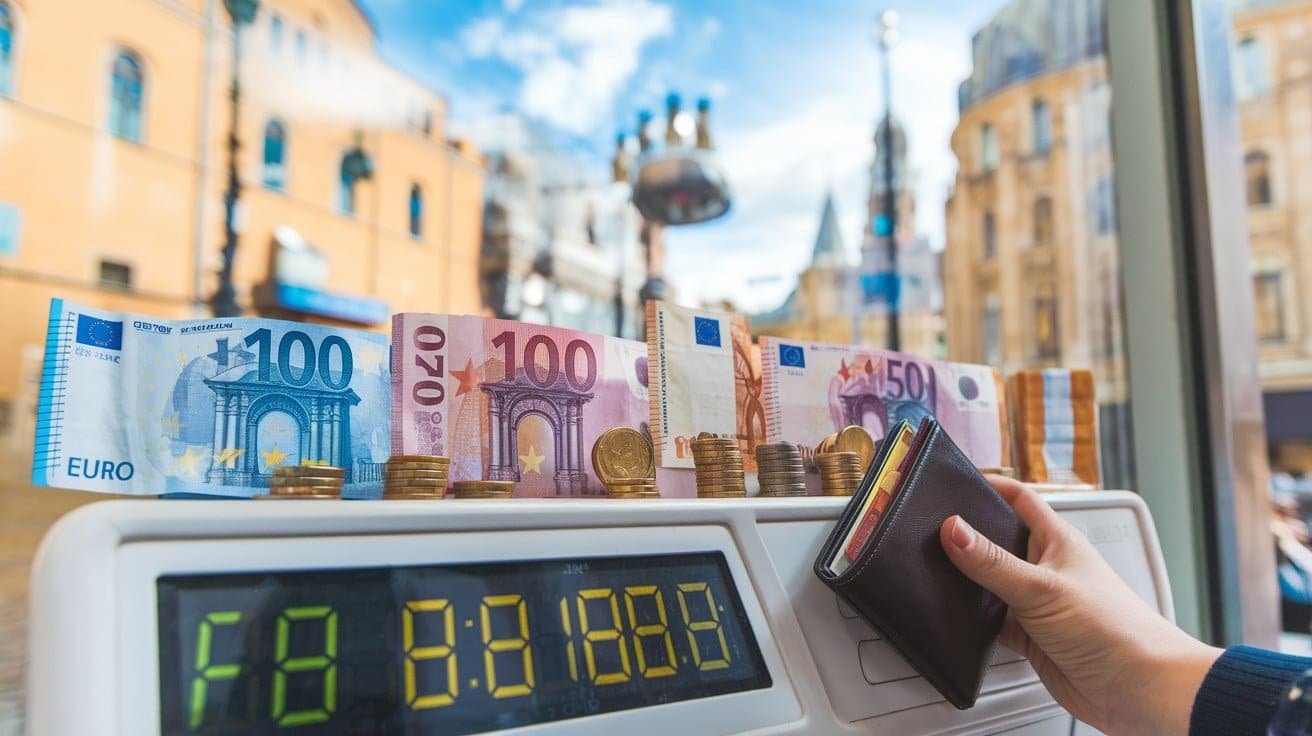
Money Matters
Now that you’re well-versed in European etiquette, let’s dive into the practical side of managing your finances during your European adventure. Understanding how to handle money matters will help you make the most of your budget and avoid unnecessary expenses.
A. Currency exchange tips
When it comes to exchanging currency in Europe, you’ll want to be savvy to get the best rates and avoid excessive fees. Here are some tips to help you make the most of your money:
- Avoid airport currency exchanges: They often have the worst rates and highest fees.
- Use local ATMs: Generally offer better rates than currency exchange offices.
- Inform your bank about your travel plans: Prevent your card from being blocked for suspicious activity.
- Consider getting a multi-currency card: These can be loaded with different currencies and used like a debit card.
| Exchange Method | Pros | Cons |
|---|---|---|
| Local ATMs | Better rates, convenient | Possible ATM fees |
| Currency exchange offices | Immediate cash in hand | Higher fees, less favorable rates |
| Multi-currency cards | Convenient, good rates | May have setup fees |
| Credit cards | Widely accepted, good for emergencies | Possible foreign transaction fees |
B. Using credit cards and ATMs
Credit cards and ATMs can be your best friends when traveling in Europe, but it’s essential to use them wisely:
- Choose a credit card with no foreign transaction fees.
- Always opt to pay in the local currency when using your card to avoid unfavorable conversion rates.
- Locate ATMs associated with major banks to minimize fees.
- Withdraw larger amounts less frequently to reduce transaction fees.
Remember, while cards are widely accepted in most European countries, it’s always a good idea to carry some cash for small purchases or in case of emergencies.
C. Budgeting for daily expenses
Creating a realistic budget for your European trip will help you manage your expenses and avoid overspending. Here’s how you can plan your daily budget:
- Research average costs: Look up typical prices for meals, accommodation, and attractions in the countries you’ll visit.
- Set a daily allowance: Based on your research, allocate a specific amount for each day of your trip.
- Track your spending: Use a travel budgeting app or a simple notebook to keep tabs on your expenses.
- Plan for unexpected costs: Set aside a contingency fund for emergencies or spontaneous experiences.
Consider these average daily costs for different travel styles:
| Travel Style | Accommodation | Food | Activities | Total (approx.) |
|---|---|---|---|---|
| Budget | €20-40 | €15-30 | €10-20 | €45-90 |
| Mid-range | €50-100 | €30-50 | €20-40 | €100-190 |
| Luxury | €150+ | €70+ | €50+ | €270+ |
Remember that these are rough estimates and can vary significantly depending on the specific country and city you’re visiting. By planning ahead and being mindful of your spending, you’ll be able to enjoy your European adventure without breaking the bank.
As you manage your finances during your trip, you’ll be well-prepared to fully immerse yourself in the local culture. Next, we’ll explore how you can make the most of your European experience by embracing the diverse customs and traditions you’ll encounter.
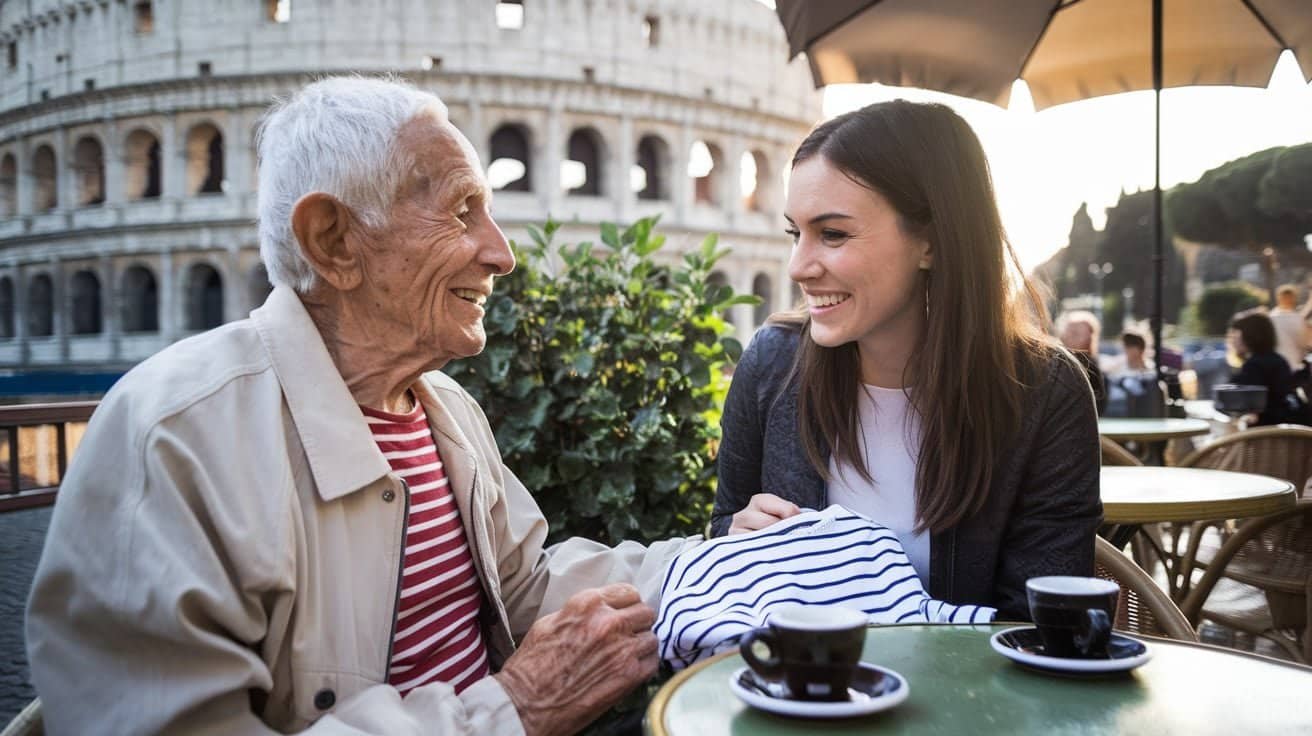
Embracing Local Culture
Now that you’ve mastered the essentials of European travel, it’s time to dive into the heart of what makes your journey truly unforgettable: embracing local culture. This aspect of your trip will transform you from a mere tourist to a savvy traveler, creating memories that will last a lifetime.
Connecting with Locals
One of the best ways to immerse yourself in European culture is by engaging with the locals. Here are some strategies to help you connect:
- Learn basic phrases in the local language
- Stay in family-run guesthouses or B&Bs
- Visit local markets and strike up conversations with vendors
- Participate in language exchange meetups
Remember, a simple “hello” in the local language can open doors to meaningful interactions and unique experiences.
Participating in Traditional Activities
To truly embrace European culture, you should actively seek out and participate in traditional activities. Here’s a table showcasing some popular activities across different European countries:
| Country | Traditional Activity |
|---|---|
| Spain | Flamenco dancing |
| Italy | Pasta making class |
| Greece | Olive harvesting |
| Germany | Oktoberfest |
| Scotland | Highland games |
By engaging in these activities, you’ll gain a deeper appreciation for the local culture and create lasting memories.
Respecting Customs and Traditions
As you explore Europe, it’s crucial to respect local customs and traditions. This not only shows your appreciation for the culture but also helps you avoid unintentional offense. Here are some tips to keep in mind:
- Research local etiquette before visiting a new country
- Dress appropriately, especially when visiting religious sites
- Learn about local dining customs and table manners
- Be mindful of cultural sensitivities and taboos
- Observe local holidays and festivals with respect
By showing respect for local customs, you’ll find that Europeans are more likely to welcome you and share their culture with open arms.
As you embrace local culture, you’ll discover that Europe is far more than just its famous landmarks and attractions. It’s a tapestry of diverse traditions, languages, and ways of life. By connecting with locals, participating in traditional activities, and respecting customs, you’ll gain a richer, more authentic travel experience.
Your efforts to immerse yourself in local culture will not only enhance your trip but also contribute to sustainable tourism, helping to preserve the unique character of each destination you visit. As you prepare to return home, you’ll find that the memories of these cultural experiences are often the ones that stay with you the longest, shaping your perspective and enriching your life long after your European adventure has ended.
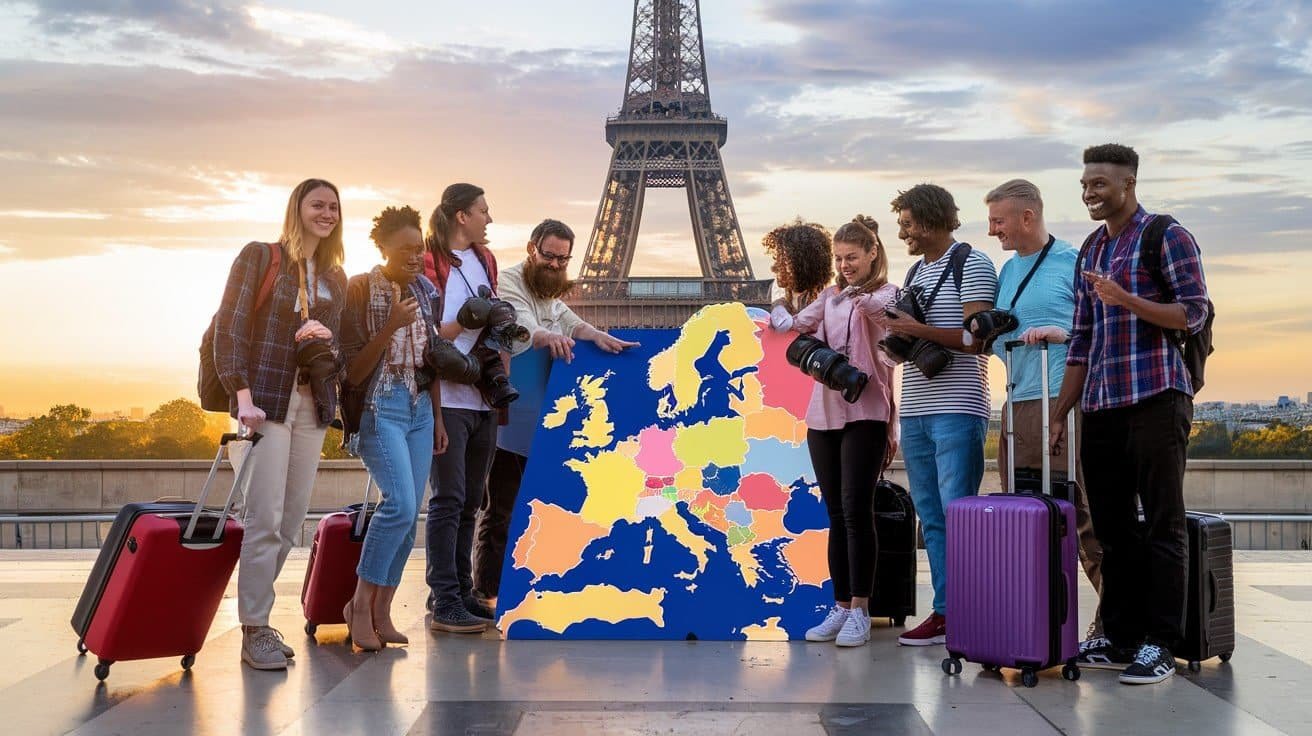
Embarking on a European adventure is an exciting journey that promises unforgettable experiences and cultural discoveries. From meticulous planning and essential documentation to exploring diverse transportation options and sampling culinary delights, you’ve now gained valuable insights to make your trip truly extraordinary. Remember to prioritize safety, respect local customs, and manage your finances wisely to ensure a smooth and enjoyable experience.
As you set out to explore the enchanting landscapes, historic landmarks, and vibrant cities of Europe, embrace the opportunity to immerse yourself in the rich tapestry of cultures that await you. Whether you’re savoring authentic cuisine, marveling at world-renowned attractions, or simply wandering through charming streets, let your European adventure be a transformative experience that broadens your horizons and creates lasting memories. Bon voyage!

